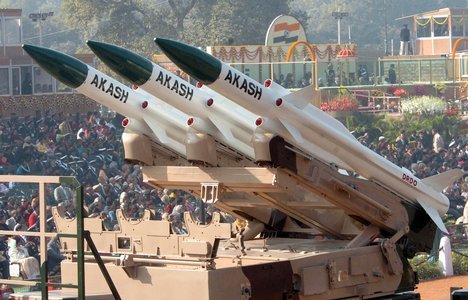India’s nuclear arsenal has overtaken Pakistan’s for the first time in 25 years, indicating a major shift in the balance of power in the region. This development represents a turning point in the security environment of South Asia, where nuclear weapons have long been essential to preserving a precarious peace.
India has been building up its nuclear arsenal since 2014. This development has been motivated by both strategic goals and worries about regional security. India’s aspiration to become a significant worldwide force and its reaction to changing dangers are both evident in this rise. The nation’s dedication to enhancing and growing its nuclear weapons has led to a strong arsenal that currently surpasses that of its longstanding adversary, Pakistan.
Shifting Balance of Power in South Asia: India’s Nuclear Arsenal Surpasses Pakistan’s
Pakistan has had a sizable stockpile of nuclear weapons and has long been seen as a potent nuclear power in South Asia. But recent developments in India point to a change in the balance of power in the region. According to analysts, this event might potentially change both countries’ strategic calculations and have significant effects on the security architecture of the region.
Also Read:India’s Maritime Revolution: Triton AUSV sets sail for Innovation
For the first time, China has put its nuclear weapons on high operational alert, a move that highlights the rising tensions throughout the Indo-Pacific region. China’s decision to increase the nuclear arsenal’s readiness is probably a reaction to a number of geopolitical factors, such as the growing competition between the two countries and the regional conflicts in the South China Sea. China’s move complicates the already complex regional security landscape and forces surrounding nations to reevaluate their defense plans.
India Matches China’s Nuclear Alert Status Amidst Regional Tensions
India has parallelly placed its nuclear weapons on high operational alert, mirroring China’s action. India’s strategic determination to uphold a credible deterrent posture in the face of growing regional uncertainty is demonstrated by this action. India intends to make sure that it is ready for any possible escalation in the region by imitating China’s alert posture.
India and China have both increased their nuclear readiness at the same time, which suggests that big Asian powers are generally becoming more prepared militarily. The danger of error or unintentional escalation persists as these countries continue to update their arsenals and polish their strategic doctrines.
The fact that China and India have raised their nuclear alert levels, along with the fact that India’s nuclear arsenal has surpassed Pakistan’s for the first time in 25 years, highlights the changing dynamics in South Asia’s security environment. In order to preserve regional peace and avert confrontation, these developments—which are a reflection of larger trends of military modernization and strategic competition among major powers—call for cautious management and vigorous diplomatic efforts.













